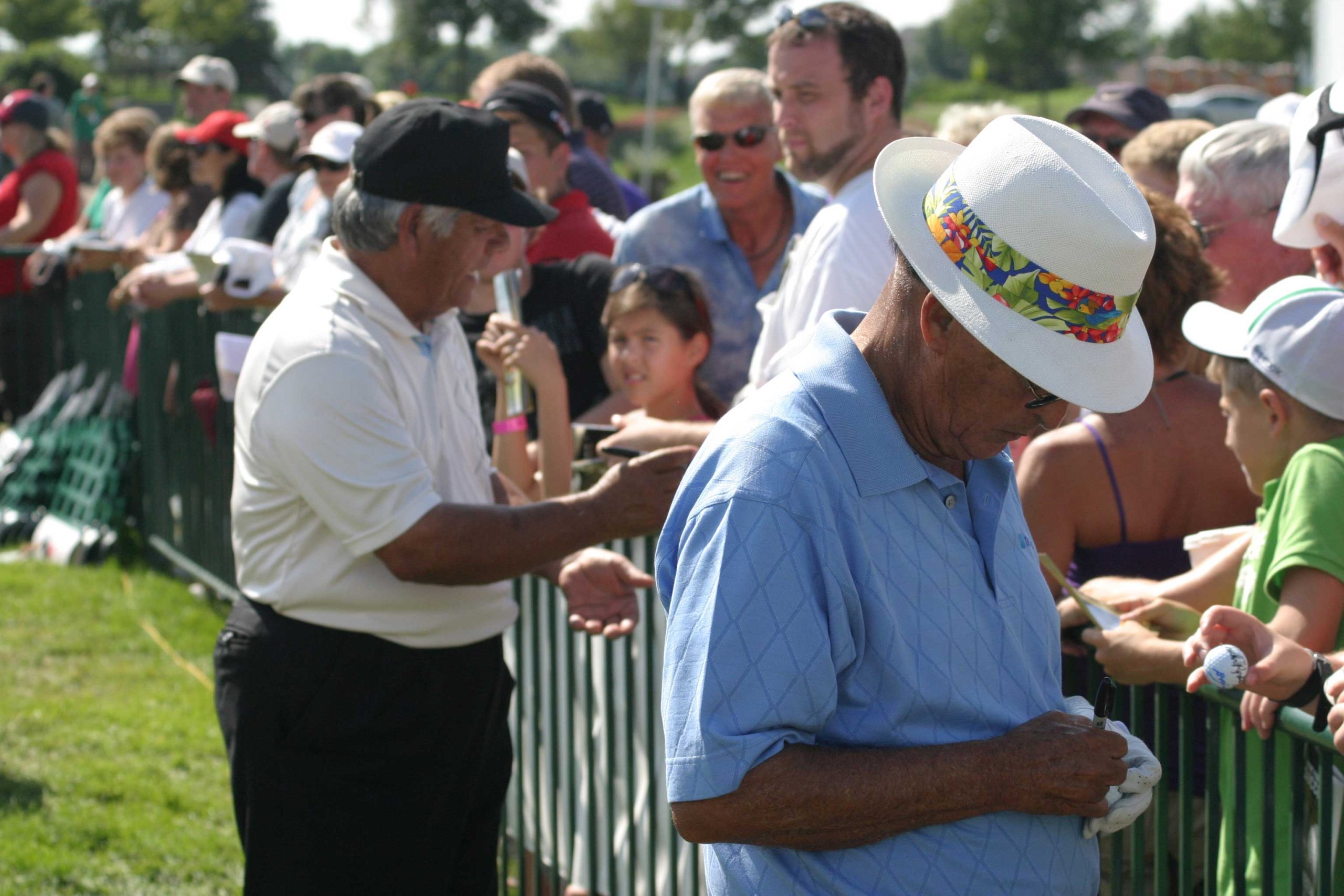Spot The Difference
By J.P. McNaney
Hard to believe but it has been 5 years since the 3M Championship became the 3M Open. More than just a name change, the tournament went from being a 25-year PGA TOUR Champions event to a full-fledged, FedEx Cup point-winning PGA TOUR event.
In those 5 years, many have talked about which they prefer.
To be fair, it is not true like comparison. They are completely different products.
For starters, the 3M Championship consisted of the greats of the game over the age of 50. The 3M Open pits the top players on the PGA TOUR. It is difficult to compare how Kenny Perry plays versus Tony Finau.
So rather than just compare the two events, let’s talk about the differences between the two tours in general.
The PGA TOUR Champions (formerly the Senior PGA Tour and Champions Tour)
Founded in 1980, the Senior PGA Tour evolved out of the successful Legends of Golf event held in Texas in 1978. In 2023, the tour will field 29 events culminating in the season-ending Charles Schwab Cup Championship in November.
To qualify to play in an event, there are as many as 22 different eligibility categories that may make a player eligible. Frankly, it is so complicated, if you asked, many players could not tell you all the ways someone might qualify.
Some of the more common exemptions are finishing in the top 54 of the previous season’s official PGA TOUR Champions Money List, top 10 in the official All-Time Money List, winner of a PGA TOUR Champions event in the last 12 months, or members who have made the cut in 150 or more PGA TOUR events or finished inside the top 48 in 100 PGA TOUR Champions events.
There are also 4 weekly open qualifying spots available for Monday qualifiers and of course there are also Sponsors Exemptions available at the discretion of each individual tournament.
Simple right?
Except for the 5 Senior Majors, the PGA TOUR Champions events are contested over 3 days and 54 holes with no cuts.
Since the players are 50 years old and older, courses are generally shorter than their PGA TOUR counterparts. Also, do not be surprised if you see players riding around in golf carts. Carts are allowed in competition on the over 50 circuit.
Crowds are generally smaller as well. Fewer spectators often allow for better up-close viewing of the action. Some PGA TOUR Champions events are even free for general admission tickets. All those unique elements provide a very intimate setting.
Players tend to interact with the crowds much more as well.
Don’t let the no-cut fool you. These events are sprints. Players need to get off to a good start on Friday if they are to be in the mix after 54 holes on Sunday. Going low is a must because these guys can still play.
Stewart Cink, Steve Stricker Padrig Harrington are just a few of the senior players that still compete regularly on the PGA TOUR as well as on the PGA TOUR Champions.
And let us not forget the iron man himself, Bernhard Langer. Langer is 65 years old and last month set the PGA TOUR Champions record for wins with his 46th at the Senior PGA Championship.
Let’s face it, these guys can play.
The PGA TOUR
Though the roots of professional golf in the United States dates to 1916 with the formations of the PGA of America, the PGA TOUR split away from the PGA of America in 1968. While the two organizations work in partnership, they are two separate entities.
As for eligibility, if you thought the PGA TOUR Champions was confusing, the PGA TOUR has 39 separate categories a play may claim to be eligible for competition.
Some of the more common ones are winners of the four majors, winners in the last 12 months of regular season tournaments, top 125 finishers in the FedEx Cup standings in the previous season, top finishers in points on the Korn Ferry Tour from the previous year, and my personal favorite, the 4 Monday qualifiers.
We would need an entire issue of this magazine to explain them all but safe to say, it’s complicated.
Tournaments are contested over 4 days and 72 holes with a cut coming after the second round is completed. Top 70 and ties get to compete over the weekend. Players below that line go home. If you miss the cut, you make no money.
That makes the first two days vital to the success of the players and thus, in a word…stressful.
Week to week, most of these players are grinding it out to not only make a living but keep their jobs for next year.
Since the players are younger and longer than their over 50 counterparts, courses are usually longer and more difficult than the PGA TOUR Champions. This difference forced a major renovation of the TPC Twin Cities prior to the 2019 inaugural 3M Open.
The crowds are no doubt larger on the regular tour, however given the amount of land at most tournament venues, spectators can still get an up-close look at the action. The closer you can get, the more impressed you will be with the talent on display.
For many years, the PGA TOUR used the tagline, “these guys are good.” That might be the most understated tag line in history. These players aren’t good…they’re great. If you are a golfer that has never been to a PGA TOUR event, I highly recommend getting to one soon. You will be amazed with what the modern player can do.
Oh, and the prize purses are larger too…much larger.
Choosing which product is better is completely a personal choice. In the 5 years since the Minnesota tournament switched from the PGA TOUR Champions to the PGA TOUR, many have voiced their preference.
If you have not been out to the TPC Twin Cities since the switch, you might consider giving it a try. We doubt you will be disappointed.
For more information about the 3M Open or tickets, please visit www.3mopen.com.





